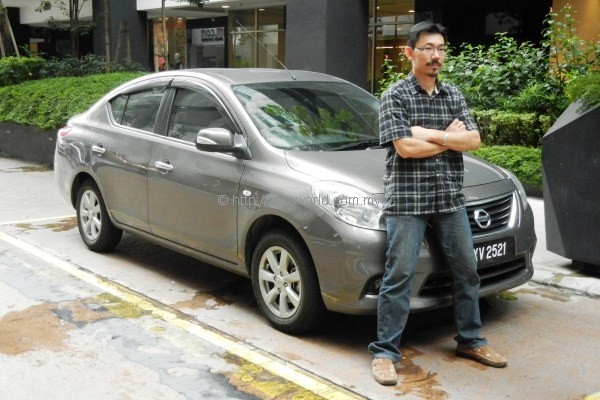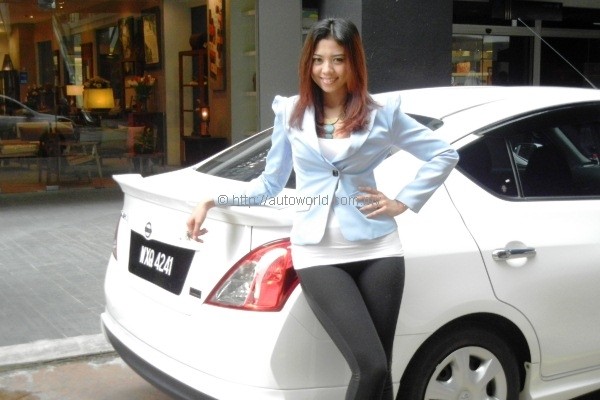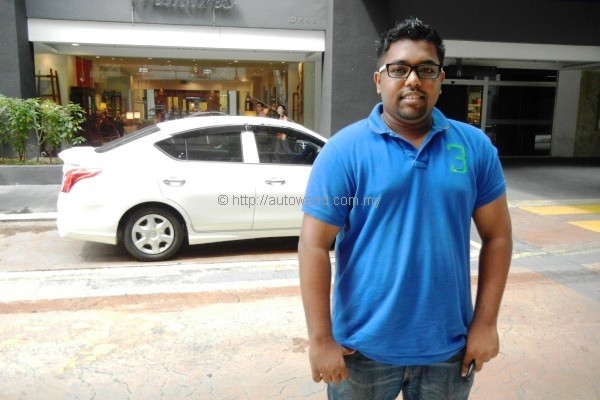Nissan Almera customers share ownership experience
One of the golden rules in our line of work reviewing cars is to evaluate a vehicle on its fitness for purpose. Our reviews should ideally be tailored to the needs of our readers, and as such, we try our best to adjust our expectations and perspectives according to the test cars that we’re given.
But try as we might, we often get side tracked by the driving experience and to neglect certain areas that actually make a difference to the paying customer. Yours truly is admittedly guilty for neglecting aspects such as rear leg and head room in favour of qualities such as handling response and steering feedback that benefit only the driver.
Reviews from journalists should always be regarded as a guideline and never the absolute standard when evaluating a vehicle for possible purchase. I’ve always advocated reading and comparing between the findings of at least two or three reviewers, and subsequently test driving the vehicle yourself before drawing any conclusions.
However, the most important source of feedback and information one can get on any product (car or otherwise) is to speak to an owner, and I recently had the opportunity to speak to three owners of the Almera in an exclusive interview session organized by Edaran Tan Chong Motor Sdn Bhd.
The Owners and Their Cars
Two of the three owners interviewed are first-time buyers in their 20s. Both opted for the basic E-spec model, although their motivations could not be more different. Aspiring model Noor Izah Baharudin had her sights set on the top end VL-spec model but was discouraged from doing so by her father. Whilst she was attracted by the range-topper’s keyless access and push button start, her father was less enamoured by these accessories, which he deemed unnecessary.
Cheras-based Mr Janagaraj, a part-time Taekwondo instructor and TV production crew, went for the only manual option in the menu. His car is decked with the optional Impul bodykit which cost an additional RM1,500. Jana is among a dying breed of drivers who consciously prefers manual transmission and he stated that if Nissan had offered a higher-specced manual variant, he would have taken it.
Lastly, we have Mr Herman Lim, the middle-aged Account Manager from The Edge, and easily the most matured among the lot interviewed. Herman is no first time buyer; his VL-spec Almera joins a garage that already hosts a Perodua Kancil, Toyota Avanza, and Renault Scenic. Herman previously drove a Ford Mondeo Mk III (current model is the Mk IV) which he sold to make way for the Almera. Herman specified his car with the TCAT multimedia touchscreen system, a selection which he says is made to entertain his kids on the move.
Why the Almera?
Being the only family man in the group, it was unsurprising to hear Herman quote fuel economy as one of his prime reasons for choosing the Almera. Before deciding on the Almera, Herman had also considered the Hyundai Elantra as a possible purchase.
Also almost going Korean was Jana, who had initially eyed the Kia Forte, but was discouraged from doing so by his mechanic who claims that maintenance costs of the model is still too high. Jana also cites poor resale value of Korean vehicles as another reason why he eventually shunned the Forte. He went on to book a Nissan Grand Livina, but switched his booking to the Almera because he feels the latter suits his younger age better.
Izah, meanwhile, did not consider Korean alternatives, but she was adamant in not getting a Toyota Vios or Honda City, as both models are, in her views, getting too common, but with over 15,000 orders for the Almera now in Tan Chong’s books, we reckon this argument will be rendered invalid pretty soon. Although she clocks low mileage, Izah says that on occasions which she travels for her modeling work, she has many shoes and clothing items to carry around, and that the Almera’s cavernous boot suited that particular need very well.
Ownership Experience
Coming from a Ford Mondeo, Herman was frank to admit that the Almera’s handling does not compare favourably to his previous vehicle, but the father of three greatly appreciates the substantial economy gains he has been enjoying since switching over to the Nissan. He saves RM400 in fuel a month and maintenance has become significantly cheaper and easier compared to his old Mondeo. On average, Herman clocks 1,500km a month, and from RM1,000 with the Mondeo, Herman’s monthly fuel bills are now slashed to just RM600.
Jana clocks significantly more mileage; his odometer now reads 15,000km after just three months of ownership, and he had actually sent his car in for its 1,000km service just three days after collecting it. He is not a big fan of what he describes as a ‘bulky’ looking dashboard, but has no complaints in terms of fit and finish considering the price he has paid.
Izah, who previously drove the family’s 2006 Honda City VTEC, found the Almera big and cumbersome during her early days with the car, although she has since adapted to its dimensions. On a personal note, it was amazing to see just how much Izah’s views differed from mine in this matter, and it further reinforces my assertion earlier in this article that one should refer to multiple sources before coming down with a verdict on any car. A further illustration to that point is how she found the AUX-jack useful, whereas I am not even bothered if a car comes with that particular feature. Izah also noted her appreciation for Tan Chong’s SMS service reminder to ensure that her Almera’s regular maintenance is not neglected.
Concluding Thoughts
The months which these owners spent with their cars have given them different insights to the Almera’s pros and cons which we might have passed off as irrelevant or missed out altogether during the course of our review which we published shortly after the Almera’s launch. Whilst we stand by our findings, we do not dismiss the views of these owners.
Motoring journalists who test a car over a distance of 200-300km and owners who live with the car day-in day-out for months and years will inevitably have differing views and priorities, and here we have a rare opportunity to present the case from the latter group’s perspective.




























